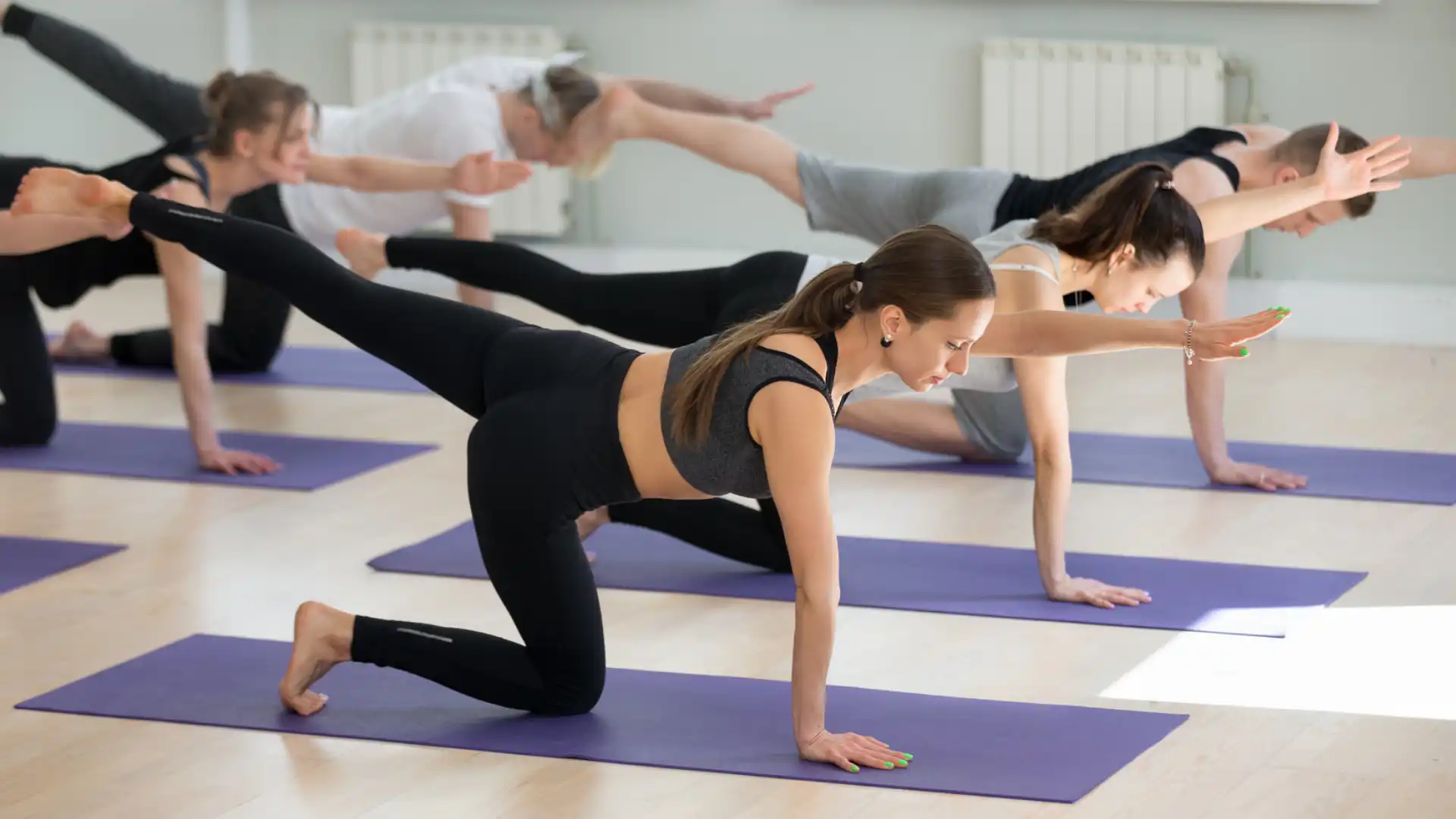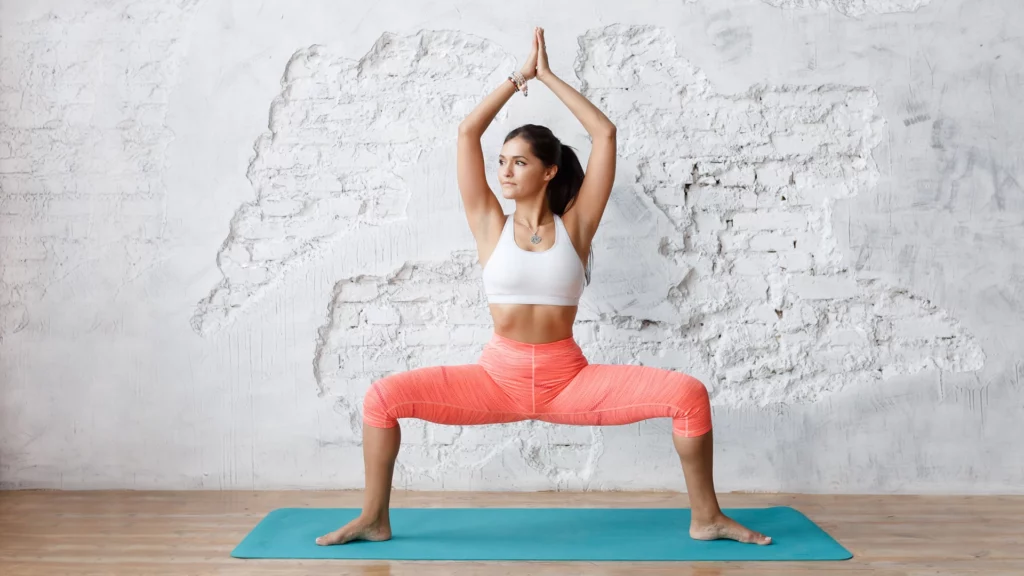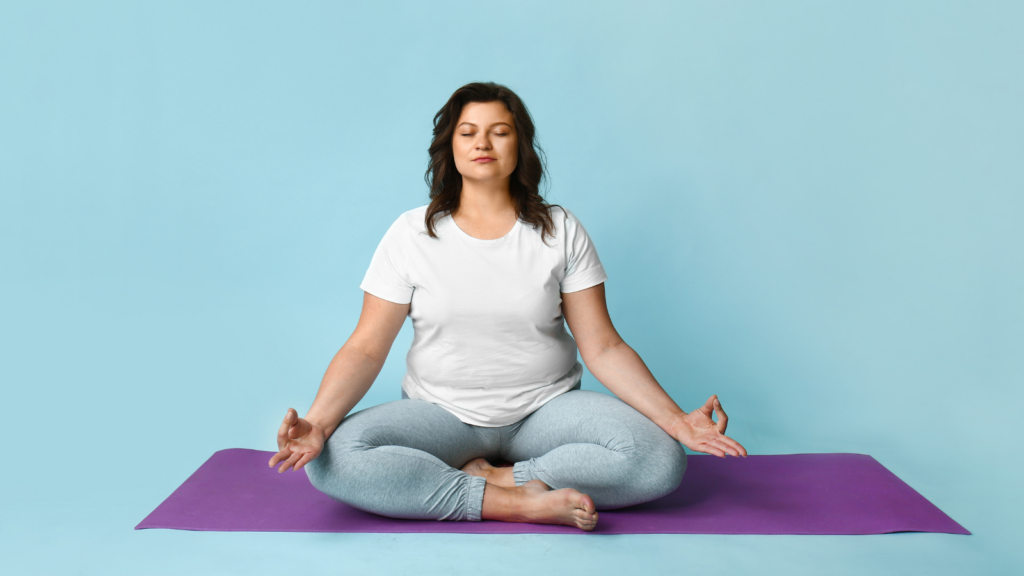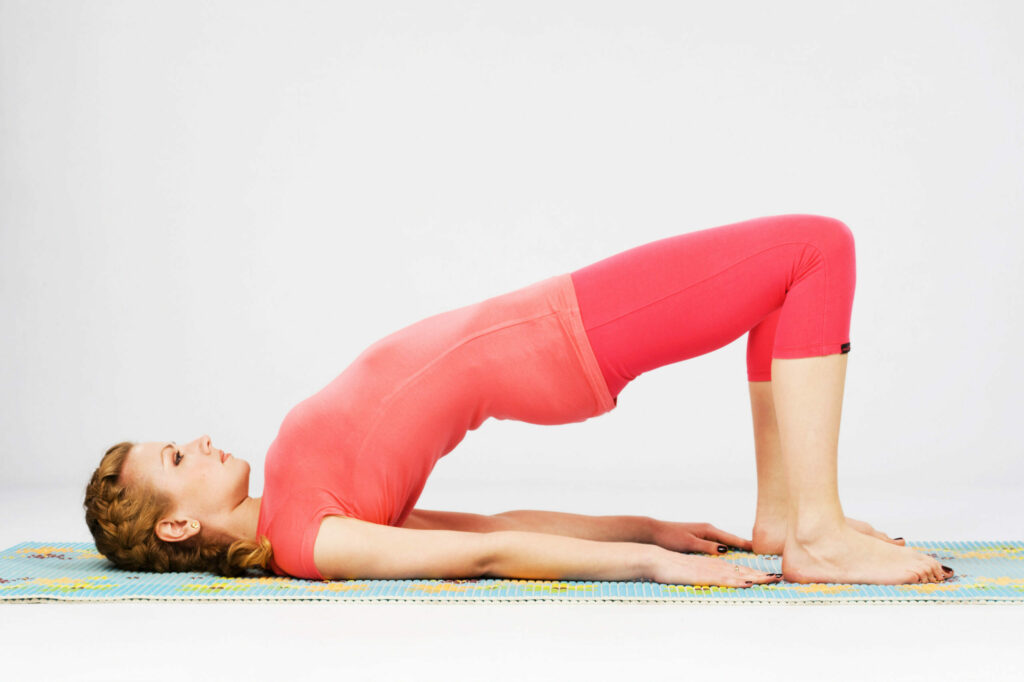Yoga for Pelvic Floor Disorders – Studies Suggest Yoga Can Help Prevent Incontinence

Article At A Glance
The two recent studies, a small pilot program, and a larger randomized trial, were conducted by a research team at the University of California in San Francisco. In both cases, the objective was to test the viability and efficacy of yoga as an alternative to more expensive medical interventions for urinary incontinence. Read about the results here.
Pelvic floor disorders are surprisingly common. After the age of 55, issues like incontinence, prolapse and pelvic pain become increasingly prevalent, and by age 80, one out of two women will have experienced some form of pelvic floor disorder.
Two recent studies set out to determine if yoga can help counteract one of the most common pelvic floor issues, i.e. urinary incontinence. The study protocol included yoga practices designed by acclaimed yoga teachers Judith Hanson Lasater and Leslie Howard, experts in yoga for pelvic floor disorders. Results were encouraging, showing as much as a 74% decrease in urinary incontinence in the study group randomly assigned to yoga practice, suggesting that yoga could offer a cost-effective, self-management solution for better bladder control.
Study Details: How Yoga Complements Traditional Interventions for Pelvic Floor Disorders

The consequences of incontinence go beyond the physical discomfort. It causes emotional distress and, for many, a disruption to daily life activities. Social consequences can be equally devastating, as women avoid engaging in activities they think will worsen the condition or cause embarrassment, including exercising and intimacy.
Incontinence can affect men and women of any age, but it is most prevalent in middle-aged and older women. And while many are reluctant to seek help or even talk about this embarrassing condition, it’s widespread: The number of US women living with some form of incontinence is estimated to be 20 million in 2018. This is no small consideration with a population of Baby Boomers moving into their sunset years, making the recent studies on the benefits of yoga for incontinence even more timely.
The two studies, a small pilot program, and a larger randomized trial, were conducted by a research team at the University of California in San Francisco. In both cases, the objective was to test the viability and efficacy of yoga as an alternative to more expensive medical interventions for urinary incontinence, such as one-on-one physical therapy or surgery.
Noting yoga’s successful role in behavioral treatments for other chronic health conditions such as low back pain, cancer-related symptoms, and hypertension, the research team hypothesized that yoga could help raise body awareness and increase muscular control via specific postures. This would empower women to identify and strengthen their pelvic floor muscles, thereby reducing the need for more traditional (and costly) interventions.

In addition to the benefits offered in overall health, tone, and well-being, yoga offers breathing and mindfulness techniques that can address the perceived stress, anxiety, and autonomic nervous system imbalances associated with a higher risk of some types of incontinence.
Urinary incontinence falls into one of four categories: Stress incontinence, urge incontinence, overflow incontinence, and functional incontinence. Of those, stress incontinence–which is associated with behaviors that put momentary pressure on the bladder, such as during exercise, coughing, sneezing, laughing, or lifting heavy objects–is the most common type of bladder control issue among middle-aged women. While the other categories are associated with underlying health issues, stress incontinence often results from musculoskeletal imbalances, such as lack of tone, imbalance, or overuse of pelvic floor muscles, which can be effectively addressed via yoga practice.
The yoga protocol for the pilot study was designed by yoga therapists Judith Hanson Lassater and Leslie Howard, experienced Iyengar teachers who are well-versed in working with people with pelvic floor issues. In devising the practice, Leslie and Judith thought it important to offer a bit of pelvic floor anatomy training along with the poses, “We thought it was crucial to give the participants a bit of an anatomy lesson, so we brought in an anatomical model to help them visualize what was happening in their bodies as they went through the poses,” Leslie explains.
The yoga practice included in the study was geared toward creating greater awareness of the pelvic floor, as well as strengthening where necessary, and learning to appropriately rebalance and cue the pelvic floor muscles. Standing poses were used for strengthening areas of weakness, while hip openers and forward bend exercises were employed to stretch and release tight areas.
Balancing Strength and Stretch To Achieve Pelvic Floor Balance Is Key

The approach was also a key ingredient to their success. “All styles of yoga are great for reducing stress, so in general, doing yoga is good for your pelvic floor,” says Leslie. “But, for example, Mula Bandha (root lock retention) for someone with muscles that are already tight is not going to be helped. With incontinence, you need to zero in on the actual problem. Often, it’s not that the muscles are too loose. Whether you stretch or release the pelvic floor or strengthen the pelvic floor. In either case, you must know how to work correctly so as not to worsen the condition.”
The pilot study included 20 women between the ages of 40 and 65. Half were randomly assigned to participate in a six-week yoga therapy program, while the other half served as the control group. At the conclusion of the pilot, the yoga group reported a 70% improvement in the frequency of their urine leakage compared to the baseline, a success rate that impressed the research team and was sufficient to obtain partial funding from the NIH for the larger trial.
The larger, randomized trial results were published in the Official Journal of the American Urological Association in April 2018. This time, participants included 58 women between the ages of 55 and 83 (average age: 66) who reported at least daily urinary incontinence and had never done yoga before.
Studies Show Promising Effects for Incontinence Self-Management Strategy and Yoga
The group was randomly assigned to a yoga group and a control group. The yoga group attended a 3-month program that once again consisted of carefully targeted, twice-weekly yoga classes and once-weekly home practice using Iyengar-style yoga techniques and exercises. The control group learned a non-specific muscle stretching and strengthening program. Both groups were also given written information and brief instructions on behavioral UI management techniques, such as pelvic floor exercises and bladder training.
Once again, the results were impressive: Over three months, the frequency of urinary incontinence in the Yoga group decreased by 74% vs. 51% in the control group. There were no reports of adverse effects from the yoga-based intervention.
The research team concluded, “When taught with appropriate attention to patients’ clinical and safety needs, yoga exercises may offer a promising community-based self-management strategy for urinary incontinence to enhance clinical treatments.”
Also, read...
Yoga and Body Image: How Yoga Can Help You Make Friends with Your Body
Smooth Transitions: 9 Ayurvedic Tips for Moving into Spring
Free Yoga Video: Breathing for Pelvic Floor Health: Two Practices to Deepen Your Breath
Related courses
Breath as Medicine: Yogic Breathing for Vital Aging
Yoga and Myofascial Release: Releasing Chronic Tension with the Bodymind Ballwork Method

Lynn Crimando, MA serves as the lead teaching mentor for YogaUOnline’s Wellness Educator Program. She is a yoga teacher, C-IAYT Yoga Therapist, board-certified Health and Wellness Coach, and a Buteyko Practitioner. Lynn is certified by the National Academy of Sports Medicine as both a Certified Personal Trainer and a Corrective Exercise Specialist. She has a private practice in the New York City area and teaches ongoing classes on behalf of Health Advocates for Older People. To learn more about Lynn, visit her website: yogalynn.com.
- Huang, A. J., Jenny, H. E., Chesney, M. A., Schembri, M., & Subak, L. L. (2014). A Group-Based Yoga Therapy Intervention for Urinary Incontinence in Women: A Pilot Randomized Trial. Female Pelvic Medicine & Reconstructive Surgery, 20(3), 147–154. http://doi.org/10.1097/SPV.0000000000000072
- Huang, A. J., Jenny, H. E., Chesney, M. A., Schembri, M., & Subak, L. L. (2018). PD32-01 A Randomized Trial of a Group-Based Therapeutic Yoga Program for Ambulatory Women with Urinary Incontinence. The Journal of Urology, 199(4), e645. https://doi.org/10.1016/j.juro.2018.02.1544



